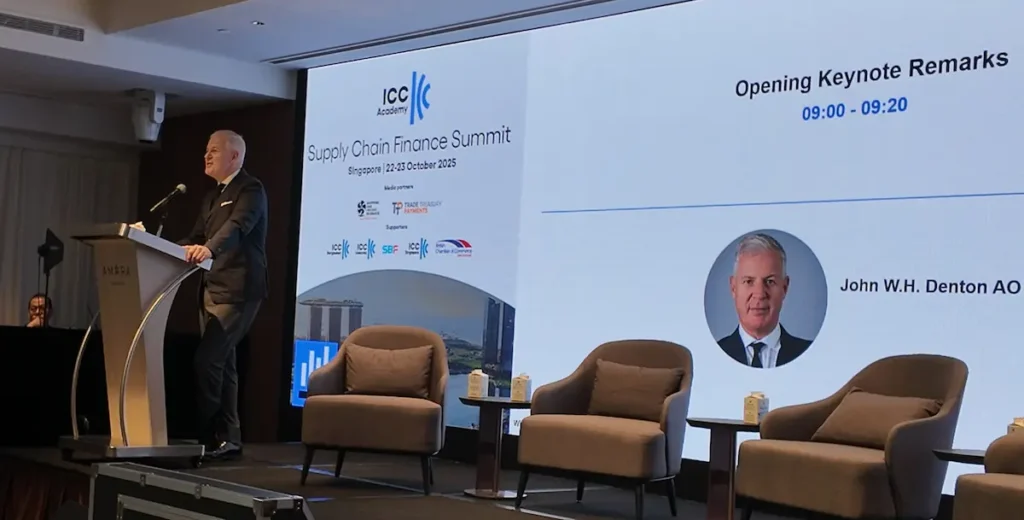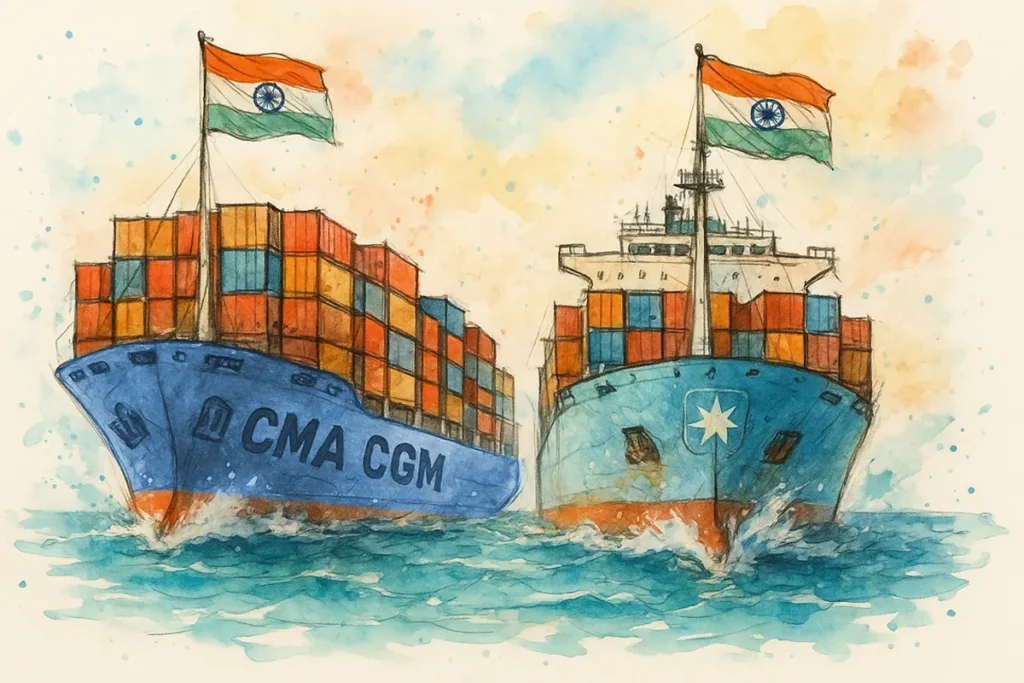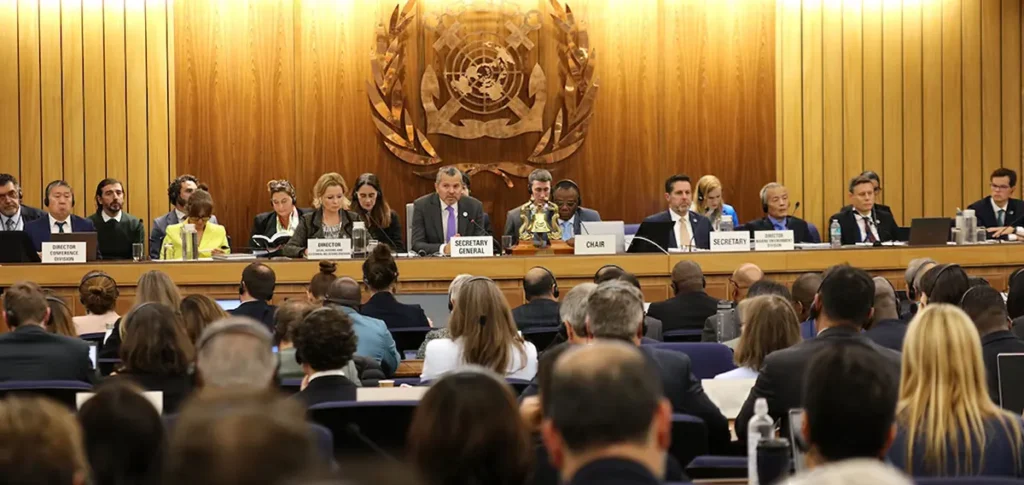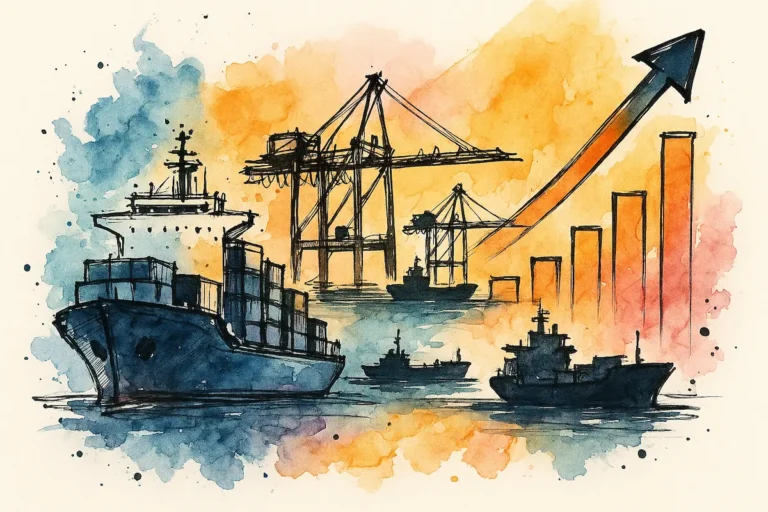ESG – One of the new age acronyms that is gaining more popularity in industries globally, especially in the last two decades, and rightfully so.. But like any acronym or jargon ESG is only understood and practiced by a few businesses and individuals..
ESG is fast becoming a key requirement and building block in many industries and its importance is growing..
But what is ESG..?? What does it mean, why do these 3 alphabets matter and how can ESG be made more relatable and accessible to the global population and not be considered as just a “woke” concept..
In this article, Kate Maria Vinther – Entrepreneur, Designer, Developer, and Founder of Lagertha takes an in-depth look into ESG and how it applies to many industries including the shipping and freight industry..
Understanding ESG
ESG stands for Environmental, Social, and Governance. It’s a framework used to assess how companies operate in a sustainable, ethical, and responsible way. As businesses and investors increasingly focus on sustainability, understanding ESG has become essential.
ESG evaluates how a company impacts the environment, treats people, and governs itself, helping investors and the public measure its long-term sustainability and ethical practices.
Despite its rising popularity, ESG remains unfamiliar to many. A survey by King Financial Planning found that 60% of clients aged 20 to 80 didn’t know what ESG was.
This gap in understanding is partly due to ESG’s complexity, which often limits discussions to investment or corporate settings. Media coverage mostly highlights big companies, leaving out how ESG affects everyday life.
Moreover, education on ESG and responsible investing is lacking in schools and communities, creating a disconnect for most people.
ESG Awareness Across Regions
Awareness of ESG varies widely across the globe. In Europe, knowledge of ESG depends on the group, while in the U.S., three-quarters of Americans surveyed were unfamiliar with the term.
In Africa, civil society organizations and NGOs often help raise awareness about ESG, especially the social and environmental aspects. Although younger generations are increasingly supporting ESG initiatives, there’s a significant amount of anti-ESG sentiment, which further complicates the topic.
Making ESG more accessible and relatable can help bridge these divides. By using everyday examples and connecting ESG to local issues, people can better understand its importance and feel motivated to engage.
Real-World Examples of ESG in Action
Environmental Initiatives
Environmental practices are about protecting nature, using resources wisely, reducing pollution, and recycling. Here are some examples:
- NYK Line (Nippon Yusen Kabushiki Kaisha) Blue Carbon Project: The company is engaged in ocean conservation efforts through its Blue Carbon project, which aims to reduce ocean acidification and improve marine biodiversity by supporting the restoration of marine habitats like mangroves and coral reefs.
- The Ocean Cleanup is a Dutch nonprofit that designs technology to remove plastic from oceans and rivers, addressing the global plastic pollution problem.
- CMA CGM, a leading global container shipping company, has made significant investments in liquefied natural gas (LNG) technology to reduce its environmental footprint. The company has launched the world’s largest LNG-powered container ship, which significantly reduces carbon emissions compared to traditional fuel-powered ships.
Social Initiatives
The social aspect of ESG focuses on fair treatment, inclusivity, and supporting well-being in communities. Examples include:
- AXA XL, (Marine Insurance Division) a global insurance company, has explored inclusive insurance in maritime. They have creating insurance products that benefit small businesses and underserved populations in emerging markets, particularly through partnerships with NGOs or government bodies to provide affordable insurance solutions for low-income groups.
- Wallem Ship Management has introduced various mental health initiatives, including access to telemedicine services, mental health workshops, and support hotlines for seafarers. They also partnered with different mental health organizations to provide crew members with counselling.
- MSC (Mediterranean Shipping Company) provides logistical support for disaster relief, shipping essential supplies to affected areas in times of crisis, such as after earthquakes or typhoons. Regarding educational initiatives MSC educates local communities about ocean conservation and sustainable shipping practices.
Governance Initiatives
Governance in ESG involves fairness, transparency, and accountability in company leadership. Bold Leadership examples include:
- Søren Skou – CEO, A.P. Moller-Maersk. Commitment to Sustainability and Fair Labor Practices: As the CEO of Maersk, Søren Skou led efforts to reduce the company’s carbon footprint and improve the sustainability of global shipping. He has pushed for better reporting practices in the industry, ensuring stakeholders had clear insights into Maersk’s CSR and sustainability initiatives.
- Diego Aponte – President, Mediterranean Shipping Company (MSC). Fair Treatment of Seafarers: Aponte is known for advocating fair labor practices within MSC’s global operations. He has been a vocal supporter of improving the working conditions of seafarers, focusing on providing them with better healthcare, education, and well-being.
- Jeremy Nixon – CEO, Ocean Network Express (ONE). Diversity and Inclusion Advocate: Jeremy Nixon has led ONE with a focus on diversity and inclusion in the maritime industry. He has been a vocal advocate for greater gender diversity and encouraging more women to pursue careers in shipping. Under his leadership, ONE has implemented policies to improve gender representation and empower women within the organization.
The History of ESG
The origins of ESG date back to the 18th century, with religious groups like the Quakers advocating for ethical investing by avoiding industries they viewed as immoral, such as slavery and alcohol.
In the 1970s, this idea grew as investors became more socially conscious, avoiding industries associated with tobacco, apartheid, or environmental damage. The 1987 Brundtland Report introduced the concept of sustainable development, further shaping ESG principles.
The term ESG was officially coined in 2004 in a report called “Who Cares Wins,” initiated by then-UN Secretary-General Kofi Annan. This report argued that companies with strong ESG practices could perform better financially.
By 2006, the United Nations launched the Principles for Responsible Investment (PRI), encouraging investors to consider ESG when making investment decisions, marking the beginning of ESG as a global movement.
ESG Reporting and Its Challenges
The demand for ESG reporting has grown as regulatory requirements and stakeholder expectations increase. However, companies face challenges with ESG reporting, especially smaller businesses that may struggle with the complexity and cost of compliance.
Balancing the need for transparency with realistic, manageable reporting standards is essential. Dialogue among regulators, businesses, and stakeholders can help create effective ESG reporting frameworks that are accessible to all companies.
CSR vs. ESG
While Corporate Social Responsibility (CSR) and ESG are both about ethical practices, they differ in purpose and approach:
- CSR is typically voluntary, focusing on a company’s social impact and how it engages with consumers and communities. It builds a positive brand image but doesn’t always follow standardized reporting.
- ESG, on the other hand, uses structured data to assess a company’s environmental, social, and governance performance. It provides measurable insights for investors and helps companies manage risk. ESG reporting often follows specific frameworks, such as the Global Reporting Initiative and the Sustainability Accounting Standards Board, to ensure consistency.
Together, CSR and ESG can create more value by encouraging accountability and sustainability. CSR builds goodwill with consumers, while ESG supports informed decision-making for investors and regulators.
Making ESG Relatable and Accessible
To fully harness ESG’s potential, it needs to be simplified and made relevant to everyday life. By focusing on local issues and showing practical ways to get involved, ESG can resonate with individuals, communities, and small businesses.
Raising awareness and promoting ESG education will help people understand the role they can play in creating a sustainable future, inspiring positive change in ways that directly benefit their lives.













